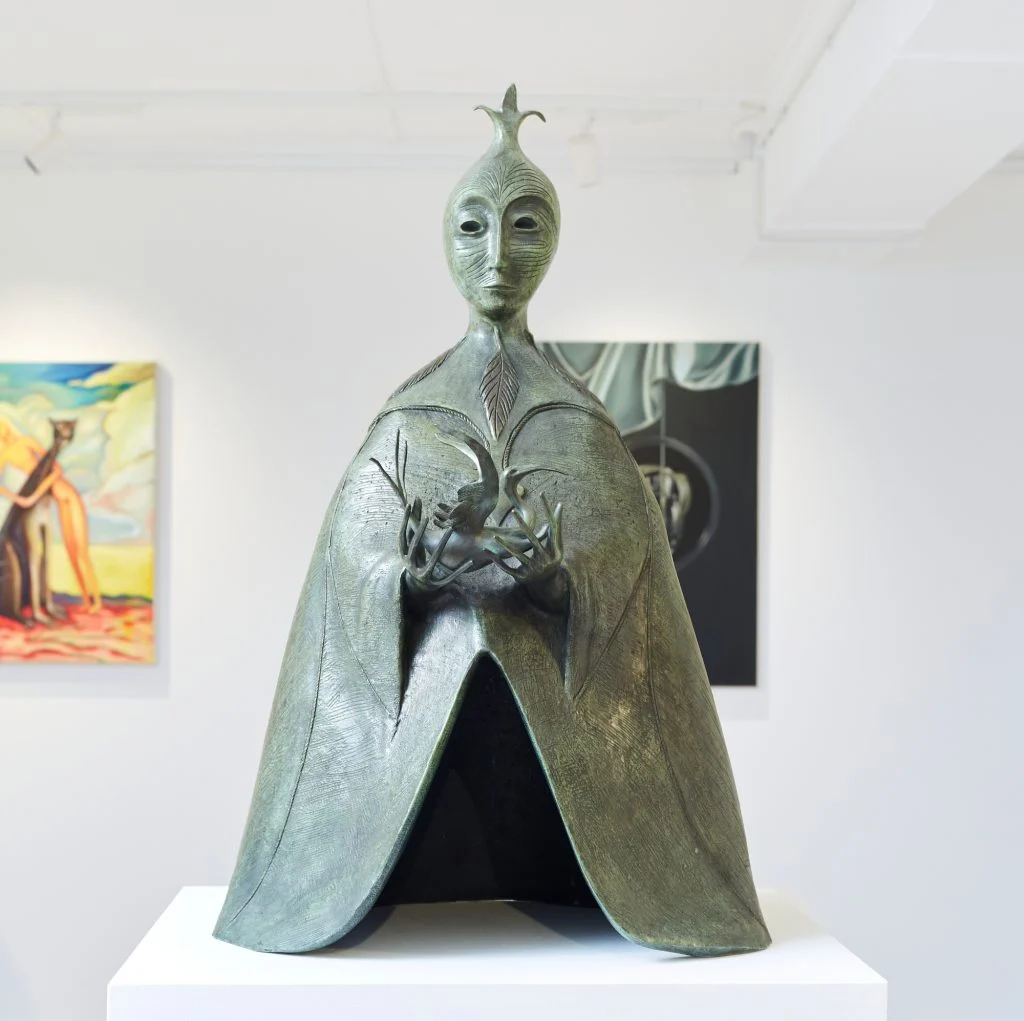A Late-Life Series of Bronze Works by the Famed Surrealist Is Finally in the Spotlight, But Questions Remain About Their Origins
In recent years, the art world has seen a growing effort to reclaim and celebrate the legacies of overlooked women artists. Among these, Leonora Carrington stands out as a remarkable success story. The British-born Surrealist, who spent much of her life in Mexico, is renowned for her enigmatic paintings that transport viewers into otherworldly dimensions, where mystical beings and ethereal landscapes intertwine with haunting beauty.
But now, it’s not just her paintings that are capturing global attention—Carrington’s sculptures have become the subject of growing fascination. A series of bronze sculptures produced toward the end of her life is finally receiving critical and commercial recognition. However, along with this newfound interest has come a wave of controversy over the exact circumstances surrounding their production, raising questions about authorship, artistic intent, and the ethics of posthumous works.
The Late-Life Bronze Series: A New Chapter for Carrington’s Legacy
Carrington, who passed away in 2011 at the age of 94, dedicated most of her career to painting, drawing, and writing. However, in her later years, she ventured into the world of sculpture, translating her surreal, otherworldly visions into three-dimensional forms.
Her bronze sculptures—which depict hybrid creatures, mythological beings, and fantastical animals—retain the same dreamlike quality that defines her paintings. These works feel as though they have emerged from the pages of an ancient fairy tale, inviting viewers to step into a realm where imagination knows no bounds.
In recent months, several of Carrington’s sculptures have commanded impressive prices at auction, and exhibitions featuring her bronzes have drawn enthusiastic crowds. Yet, the origins of these sculptures have been mired in uncertainty, with some experts raising concerns about how and when they were produced.
Questions About Authorship and Artistic Control
The controversy centers around a key question: To what extent did Carrington herself oversee the production of these sculptures?
It is known that Carrington worked with foundries in Mexico to create bronze versions of her designs in the final years of her life. However, some of the works attributed to her appear to have been cast after her death, sparking debate over whether these sculptures can be considered authentic expressions of her artistic vision.
Art historians and Carrington’s supporters argue that she approved the original designs and that the bronzes remain true to her aesthetic and intentions. Others, however, caution that posthumous casts can muddy the waters of authorship, raising concerns about transparency and ethical practices in the art market.
The Role of Family and Foundations
Further complicating the situation is the role of Carrington’s estate and family in the production and sale of these sculptures. While her sons, Gabriel and Pablo Weisz Carrington, have been involved in managing her legacy, disputes have emerged over control of her artistic output. Some family members and art experts have expressed concerns that commercial interests may be driving decisions that could compromise the integrity of Carrington’s body of work.
The question of posthumous casting has long been a contentious issue in the art world. While some view it as a way to preserve and extend an artist’s legacy, others argue that it risks distorting the artist’s original vision. In Carrington’s case, this tension is playing out in real time as her sculptures gain wider recognition.
The Market Responds: Soaring Prices and Demand
Despite the controversy, the market for Carrington’s bronzes is booming. Auction houses and galleries have seen rising demand for her sculptures, with some works fetching hundreds of thousands of dollars. This surge in interest reflects not only the growing appreciation for Carrington’s artistry but also the broader trend of recognizing and elevating the contributions of female artists historically marginalized by the art establishment.
However, as prices climb and interest intensifies, so too does the scrutiny surrounding the provenance and production of these works. Collectors and institutions are increasingly seeking assurances about the authenticity and ethical sourcing of the pieces they acquire.
Balancing Legacy and Ethics in the Art World
As Leonora Carrington’s legacy continues to flourish, her sculptures have added a new dimension to her oeuvre, captivating audiences with their surreal and fantastical forms. Yet, the ethical dilemmas surrounding their production highlight the complexities of preserving an artist’s legacy in a rapidly evolving art market.
Moving forward, the challenge lies in striking a balance between honoring Carrington’s vision and maintaining transparency and integrity in how her works are presented and sold. As the art world grapples with these questions, one thing remains clear: Leonora Carrington’s imagination continues to inspire and intrigue, in every dimension.



0 Comments